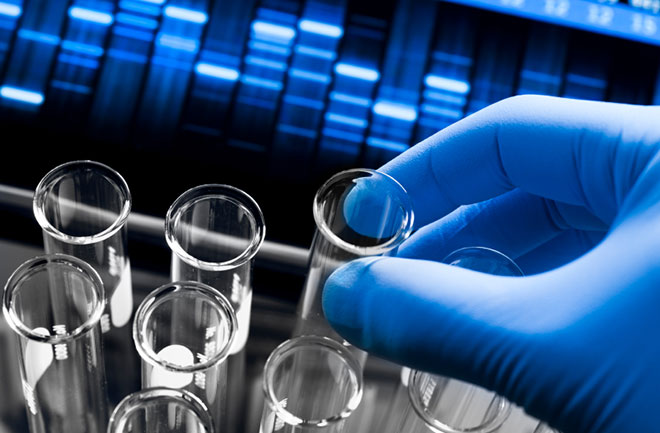Millions have died as a result of deadly viral diseases that were discovered late or not at all, due to its nearly invisible inhabitancy in the body.
Imagine if early detection became a possibility. Well, scientists and researchers haven’t relented in their continuous effort to make this happen and even become readily accessible.
In 2016 alone, there has been a record of medical breakthroughs that have gone on to save lives.
Here are six tested medical developments that could save a life.
Don’t rush to cut the cord
Bleeding in the brain is one of the most common complications of premature babies.
New research has revealed that simply waiting 45 seconds more before cutting the umbilical cord can reduce this risk significantly.
“We were impressed especially by the reduction in [bleeding in the brain] by almost 50 percent,” said the doctor.
“There were no adverse effects and significantly fewer babies who got delayed cord clamping were intubated for apnea or respiratory diseases in the delivery room.”
Deadly fevers discovered faster
Think of the countless lives that could have been saved if contagious haemorrhagic fevers such as Ebola, yellow fever, and dengue could be identified early. Especially in remote underdeveloped areas, so that no time is wasted in starting treatment or setting up a quarantine.
The test, in the form of a set of colour-changing strips, has been developed by researchers at the Massachusetts Institute of Technology, working with the U.S. Food and Drug Administration.
The strips work similarly to pregnancy strip tests and can alert healthcare workers to the possible presence of a specific deadly viral infection. It works by turning orange for yellow fever, red for Ebola and green for dengue.
The strips, although efficient, cannot be as accurate as the testing procedure carried out in a lab.
“This is a complementary technique for places with no running water or electricity,” says Kimberly Hamad-Schifferli, one of the team leaders.
“We’re trying to move this into the field and put it in the hands of the people who need it”, she added.
First new antibiotic in 30 years
Scientists at the University of Bonn in Germany, in collaboration with Northeastern University in Boston, announced the discovery of an antibiotic that has the potential to work against a broad range of fatal infections such as pneumonia, tuberculosis, and blood and soft tissue infections.
Studies show that the drug, called teixobactin, is highly unlikely to lead to drug resistance, one of the biggest stumbling blocks in developing new antibiotics, as well as being a major health problem today.
The new antibiotic is expected to receive approval in Europe and the U.S. within five years.
A portable breathing lung
In 2013, transplant specialists at University Hospital in Leuven, Belgium, succeeded in preserving donor lungs outside the body for 11 hours, the longest time in medical history.
The result of this breakthrough is that those suffering from chronic lung disease and waiting for transplants have more significant time to live.
The success of this is owed to OCS LUNG, developed by TransMedics, a portable machine that supplies the donor lungs with a continuous, fresh supply of oxygen.
The machine will revolutionise lung transplants by enabling surgeons to preserve and monitor donor lungs for longer between sites.
It is now available for purchase in Europe and Australia. Clinical trials in the U.S. are currently enrolling.
Lost and found eye sight
The studies began last year by Ocata Therapeutics, a U.S.-based company. The found research could help restore disintegrating eyesight due to age-related macular degeneration.
Commonly, what happens with the disease is, a thin layer of tissue that delivers nutrients and oxygen to the eye’s rods and cones begins to deteriorate. Without these nutrients, eyesight begins to be compromised.
Ocata coaxes stem cells to become healthy tissues – the retinal pigment epithelium cells – that can then be injected into the eyes.
It is the hope of the company that the surgery will soon become very common and accessible to the masses.
Escaping Leigh Syndrome
In the course to find a cure for Leigh Syndrome after a mother lost two babies to the disease, doctors have come through with the ‘3-parent’ technique.
The process begins when the mother carries genes for this disease in her mitochondrial DNA, which is found in the cell’s energy-generating mitochondria. While a baby inherits most of its DNA from both parents, mitochondrial DNA is only passed down from the mother to the child.
To avoid passing on the disease-causing mitochondrial DNA, John Zhang and his colleagues at the New Hope Fertility Center in New York City, used mitochondria from an egg belonging to another woman – an anonymous donor.
The ethics and legality of this procedure are still under a telescope as many doctors fear it may have future implications.
Copyright 2025 TheCable. All rights reserved. This material, and other digital content on this website, may not be reproduced, published, broadcast, rewritten or redistributed in whole or in part without prior express written permission from TheCable.
Follow us on twitter @Thecablestyle

